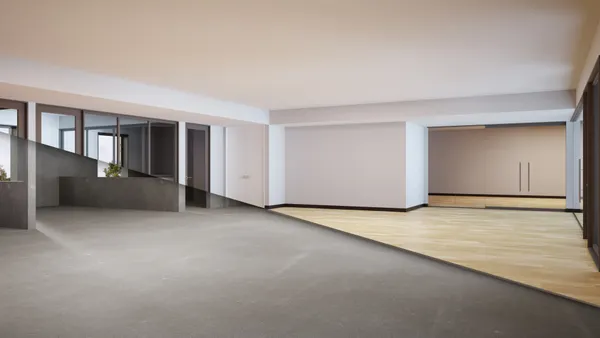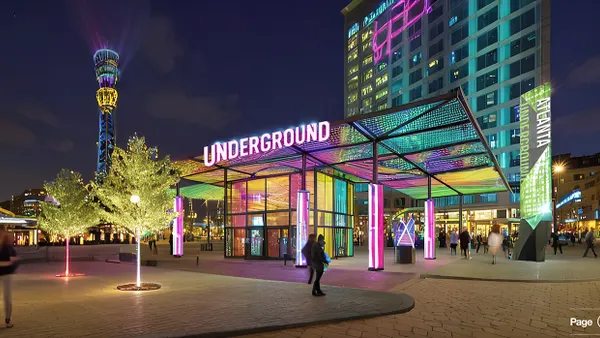Dive Brief:
- The U.S. Department of Agriculture Forest Service awarded a $100,000 grant to Rice University in Houston to help with the construction of a mass timber building on its campus.
- The funds will help the university with the planning and approval process for its first mass timber construction project, involving a five-story, 50,000-square-foot building for residential space and common areas. The project will help the university achieve their commitment to becoming carbon neutral by 2038.
- Rice University was one of ten universities to receive a combined $1 million in grants to build mass timber projects. The other nine universities include: University of Arkansas, University of Idaho, Bowdoin College, University of Maine, Michigan Technological University, Oregon State University, San Jacinto College, Stephen F. Austin State University and University of Washington.
Dive Insight:
The use of mass timber for construction is increasingly gaining popularity, most notably with the recent announcement of Alphabet-owned Sidewalk Labs' Waterfront Toronto project that will be built entirely out of wood.
Mass timber is lauded for its ability to help cities reduce carbon footprints. The structures can last up to 100 years and sequester carbon from the atmosphere. A piece of land with no building on it has a higher carbon footprint than land with a cross-laminated timber (CLT) building, according to The Climate Trust.
Karim Khalifa, director of buildings innovation at Sidewalk Labs, told Smart Cities Dive that he considers the Quayside smart city neighborhood designs not as buildings, but instead as big timber [CO2] vaults. Other benefits of building with mass timber include fire resistance and faster construction.
But Sidewalk Labs isn't the first major company or institution in North America to work with mass timber. Universities have served as a test bed for the material in recent years.
Rice University Architecture Professor Jesús Vassallo has taught a "tall timber" graduate course for the past five years. The seminar is designed for students to explore applications of the material. When Vassallo began the class in 2015, use of the material seemed like "something that would happen in the far off future," he said.
College campuses have in many ways been the perfect place to test different uses of mass timber. Universities don't face the same economic pressures as cities, and academics can spend four months of their lives putting together ideas and designing projects to help disseminate ideas, according to Vassallo. "Universities are uniquely positioned to make the first wave of wood products happen," he said.
The University of Maine is also making headway in the application of mass timber. Home to four mass timber buildings, it was also awarded a $100,000 grant from the from the U.S. Forest Service.
The institution plans to use the funds to create the initial architecture and design plans for a 21,000-square-foot CLT laboratory addition to showcase the material and house a 3D printer. The university's existing 100,000-square-foot lab, built out of mass timber with two ten-ton cranes riding on wooden timber beams to boot, currently houses the university's "gigantic" 3D printer that prints over 100-foot-long parts, Wood Composites Manager Russell Edgar told Smart Cities Dive.
The university began focusing research efforts on mass timber, particularly CLT, about six years ago, he said. Maine is the most heavily forested state in the nation, according to Edgar, so it is well-situated to feed growing demand for mass timber, which should continue to increase over the next five to ten years.
Higher education institutions like the University of Maine will serve a critical role in that demand by training the industry's future workforce, he said.












